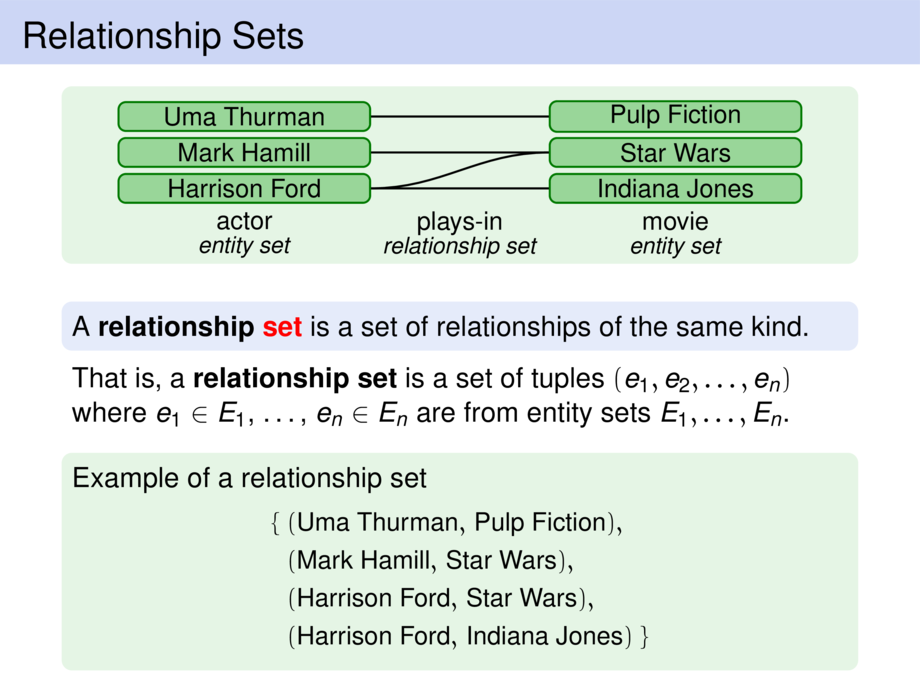



































































































17/98
\begin{frame}
\frametitle{Relationship Sets}
\movieexample
\bigskip
\begin{block}{}
A \emph{relationship \alert{set}} is a set of relationships of the same kind.
\end{block}
That is, a \emph{relationship set} is a set of tuples $(e_1,e_2,\ldots,e_n)$
where $e_1 \in E_1$, \ldots, $e_n \in E_n$ are from entity sets $E_1,\ldots,E_n$.
\medskip
\alt<-1>{
\begin{exampleblock}{}
Example of a relationship set
{\small
\begin{talign}
\{ \; &(\text{Uma Thurman},\,\text{Pulp Fiction}), \\
&(\text{Mark Hamill},\,\text{Star Wars}), \\
&(\text{Harrison Ford},\,\text{Star Wars}), \\
&(\text{Harrison Ford},\,\text{Indiana Jones}) \;\}
\end{talign}\vspace{-2.3ex}}
\end{exampleblock}
}{
\begin{goal}{}
The relationship set \textit{plays-in} between
entity sets \textit{actor} and \textit{movie} is indicated as follows in ER models:
\begin{center}
\scalebox{.85}{
\begin{tikzpicture}[every edge/.style={link}]
\node[entity] (actor) {actor};
\node[entity,right of=actor, node distance=6cm] (movie) {movie};
\node[relationship] (plays) at ($(actor)!.5!(movie)$) {plays-in} edge (actor) edge (movie);
\end{tikzpicture}}
\end{center}
\end{goal}
}
\pause
\vspace{10cm}
\end{frame}

